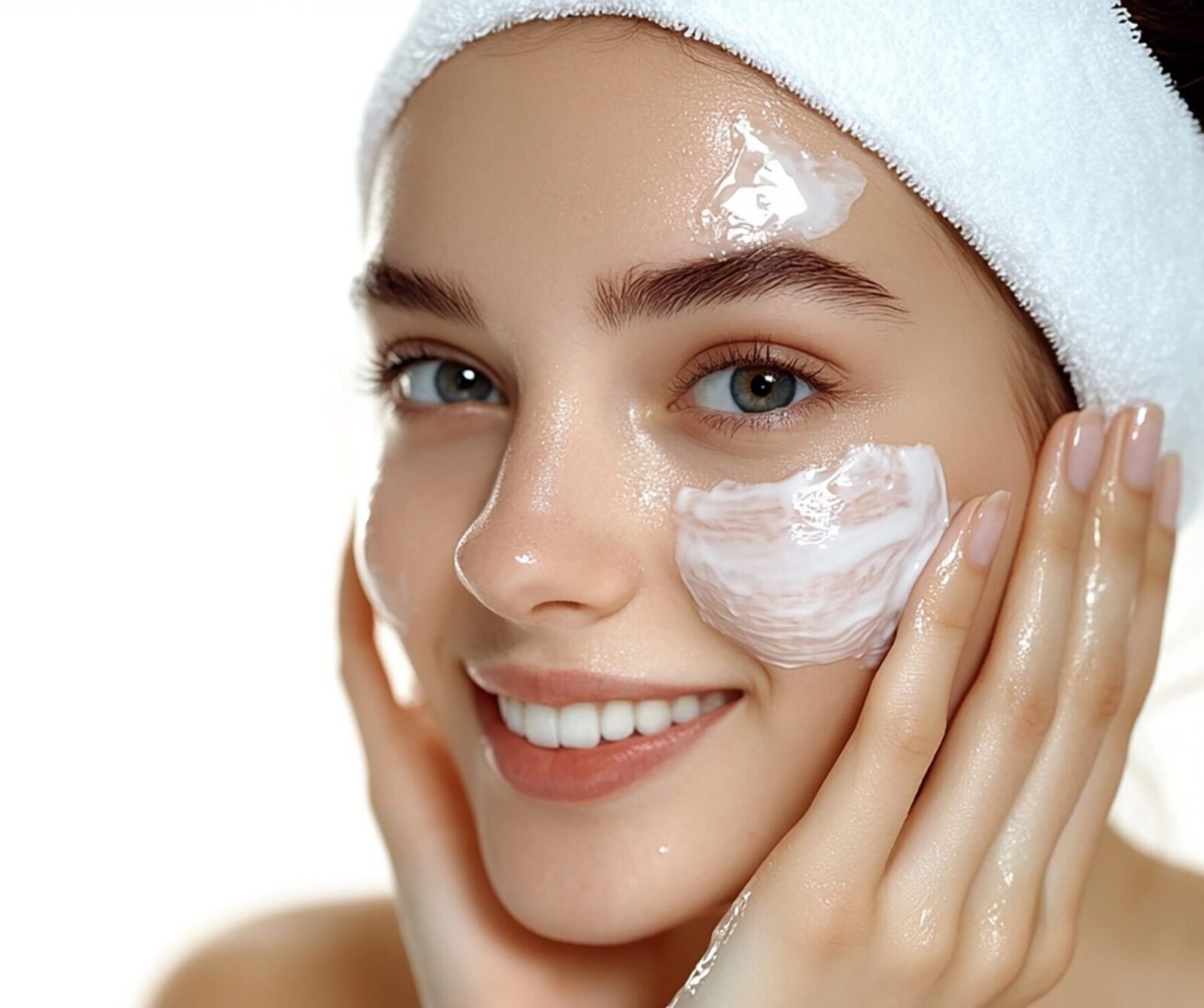Are Tanning Beds Ever Safe?
Never. The UV radiation from tanning beds—and of course the sun—causes skin damage, accelerates aging, and increases the risk of skin cancer. Tanning beds are never safe or beneficial for your skin. Getting a so-called “base tan” only adds to cumulative sun damage. In fact, studies show that indoor tanning beds raise the chances of developing melanoma by 20 percent (PubMed). Therefore, the safest choice is to avoid them altogether.
The Rise of Self-Tanning Products
Since the 1950s, consumers have looked for safer ways to achieve bronzed skin without harmful UV exposure. The discovery of dihydroxyacetone (DHA) as a tanning agent was accidental, first noticed when patients using DHA for medical purposes developed darker skin tones. By the 1960s, cosmetic companies began formulating lotions with DHA, although the first products often looked orange and streaky. Fortunately, science has advanced. Today’s formulations are more natural-looking, stable, and far easier to apply. Moreover, the category continues to evolve as consumer demand for “sunless tanning” grows worldwide.
How Do Self-Tanning Products Work?
Self-tanners are not stains or dyes. Instead, they rely on an active ingredient called dihydroxyacetone (DHA). The FDA considers DHA safe for topical use (FDA). Derived from beet or cane sugar, DHA reacts with amino acids in the stratum corneum—the top layer of skin—through the Maillard reaction. This reaction is the same process that browns bread in the toaster or darkens an avocado when exposed to air. The visible darkening effect typically appears within about four hours and gradually fades as the outer layer of skin sheds naturally.
Another common ingredient is erythrulose, a keto-sugar derived from raspberries. It works similarly to DHA but develops color more slowly, often over 24–48 hours. When combined with DHA, erythrulose creates a more even and longer-lasting tan. Consequently, many modern formulations use both sugars to balance speed and natural tone.
Are Sunless Tanning Products Harmful?
Overall, sunless tanners are considered safe alternatives to tanning beds or prolonged sun exposure. However, not all formulas are equal. Some products contain parabens, which act as preservatives. Parabens such as methylparaben, propylparaben, ethylparaben, and butylparaben have been linked to health concerns including breast cancer (PubMed). Therefore, it is best to avoid any topical product with ingredients ending in “-paraben.” Many brands now market paraben-free self-tanners in response to consumer demand for cleaner labels.
In addition, other additives such as fragrances or certain solvents may irritate sensitive skin. For this reason, dermatologists often recommend patch testing a new formula before applying it over large areas. Importantly, even though self-tanners darken the outer skin, they do not provide UV protection. Therefore, sunscreen remains essential during the day.
The Potential Risks of DHA and Erythrulose
DHA Can Trigger Free Radicals
One study found that DHA increased free radical formation, a process known as oxidative stress. Free radicals damage skin cells and break down collagen and elastin. As a result, frequent use may accelerate visible aging, including wrinkles and sagging skin.
DHA Can Accelerate Sun Damage
Another study reported that DHA-treated skin generated more than 180% additional radicals during sun exposure. In other words, applying DHA and then spending time in the sun without sunscreen may worsen photoaging instead of preventing it.
Erythrulose Shows Similar Effects
Erythrulose has also been shown to increase free radical production in a way similar to DHA (PubMed). This means that while both sugars effectively darken the skin, they may stress skin cells when exposed to UV radiation. Therefore, pairing self-tanners with strict sun protection is critical.
Formulation Challenges and Advances
- Acidic pH (3–4): Maintaining a mildly acidic environment stabilizes DHA and improves shelf life.
- Barrier packaging: Airless pumps and opaque bottles reduce oxygen and light exposure, minimizing degradation.
- Encapsulation: Microencapsulation technologies control DHA release, improve color uniformity, and reduce odor.
- Antioxidant systems: Adding vitamin E, ascorbic acid, or green tea polyphenols helps counter oxidative stress.
Consumer Guidance
- Exfoliate one day before applying self-tanner to ensure even color development.
- Apply emollient to thick-skinned areas like elbows, knees, and ankles to prevent uneven darkening.
- Use gloves or tanning mitts to avoid staining palms.
- Wait at least 4–6 hours before showering or exercising to allow full color development.
- Moisturize daily to extend the tan’s longevity.
- Always apply sunscreen because self-tanners do not block UV rays.
Frequently Asked Questions (FAQs)
Q: How long does a self-tan last?
A: Typically 4–7 days, depending on skin turnover. Daily moisturizing helps extend results.
Q: Can I combine self-tanners with exfoliating acids or retinol?
A: Yes, but use caution. Over-exfoliation fades the tan quickly. Therefore, alternate nights or buffer actives with moisturizer.
Q: Are self-tanners safe during pregnancy?
A: Topical DHA is considered safe because it affects only the stratum corneum. However, avoid spray tans to limit inhalation and always consult a clinician for reassurance.
Q: Why does my tan fade unevenly?
A: Uneven fading occurs when certain skin areas (like elbows and knees) retain DHA longer. Regular exfoliation and moisturizing improve evenness.
Q: How often can I reapply self-tanner?
A: Most people reapply every 3–5 days to maintain consistent color. Importantly, moderation reduces buildup and patchiness.
Market Trends in Sunless Tanning
Consumers increasingly demand clean, vegan, and sustainable products. Consequently, formulators are turning to plant-derived DHA, eco-friendly packaging, and advanced odor-control systems. Moreover, microencapsulated DHA and erythrulose represent a new generation of actives that deliver better stability and more natural tones. As the category evolves, self-tanners are positioned not only as cosmetic enhancers but also as skincare hybrids that combine tanning with hydration, barrier repair, and antioxidant defense.
Final Thoughts
No self-tanning product is entirely risk-free, yet they remain far safer than UV tanning. By using paraben-free, well-formulated products, applying them correctly, and pairing them with sunscreen, consumers can achieve bronzed skin with minimal downsides. Furthermore, modern science continues to refine DHA and erythrulose systems, offering better performance, fewer odors, and improved stability. Ultimately, self-tanners demonstrate how cosmetic chemistry can meet beauty trends while protecting long-term skin health.
Formulator’s Pick
Explore Dihydroxyacetone (DHA) by Grand Ingredients — a high-purity, formulation-ready active that ensures consistent, natural, and stable results in advanced self-tanning products.






